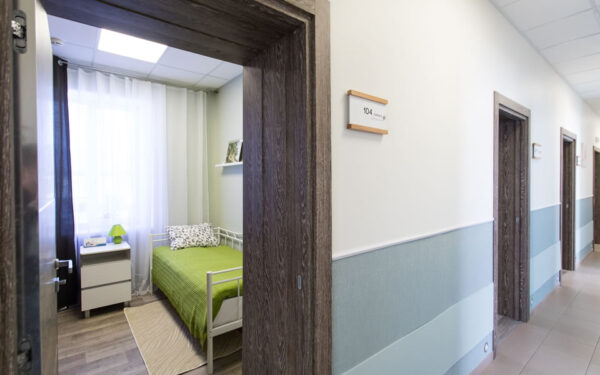Patient Driven Payment Model – The Dollars Might Be In the Details

Beginning on October 1, 2019, the Medicare reimbursement system for skilled nursing facilities (SNF) will change from the Resource Utilization Group Fourth Revision (RUGS-IV) to the Patient Driven Payment Model (PDPM). The payment system will change from less than a hundred possible payment categories to tens of thousands of possible payment combinations. The many combinations are a result of separate reimbursements for Nursing, Physical Therapy (PT), Occupational Therapy (OT), Speech Language Pathology (SLP), Non-Therapy Ancillary (NTA), and Non-Case Mix components all added together. CMS states the new system is designed to more accurately reimburse SNFs based on each resident’s characteristics and care needs. Residents will have to be observed and documented accurately in order to receive the proper reimbursement.
In an effort to provide education and to our clients and the industry, Marcum has created an internal PDPM Medicare rate calculator. To illustrate the impact of PDPM let’s review a hypothetical resident admitted on October 1, 2019 to a SNF in Nashville Tennessee after a three day inpatient hospital stay for a complex hip replacement and for a Medicare Part A stay expected to last 40 days. The resident also has chronic pancreatitis, septicemia, and depression. The Minimum Data Set Section GG will have a therapy functional score of 10, nursing functional score of 7, and a non-therapy ancillary score of 7. The resident does not have a swallowing disorder, mechanically altered diet, or a speech language pathology (SLP) comorbidity. The resident would be grouped into the nursing category HBC2 or group F due to the septicemia, depression, and nursing functional score of 7. Additionally, the resident would further be grouped into the C category for physical therapy and occupational therapy as a result of the complex joint replacement and therapy functional score of 10. The SLP category would be A and the NTA score of 7 would place the resident in the C category for NTA. The Health Insurance Prospective Payment System (HIPPS) Code for the resident would be based on the PDPM formula of PT/OT Therapy + SLP + Nursing + NTA + MDS Code or CAFC1.
Utilizing Marcum’s Medicare SNF PDPM Rate Calculator:
| Day of Stay | HIPPS Code | PDPM Rate | PDPM Cumulative Rate |
|---|---|---|---|
| 1 | CAFC1 | 916.35 | 916.35 |
| 2 | CAFC1 | 916.35 | 1,832.70 |
| 3 | CAFC1 | 916.35 | 2,749.05 |
| 4 | CAFC1 | 646.45 | 3,395.50 |
| 5 | CAFC1 | 646.45 | 4,041.95 |
| 6 | CAFC1 | 646.45 | 4,688.40 |
| 7 | CAFC1 | 646.45 | 5,334.85 |
| 8 | CAFC1 | 646.45 | 5,981.30 |
| 9 | CAFC1 | 646.45 | 6,627.75 |
| 10 | CAFC1 | 646.45 | 7,274.20 |
| 11 | CAFC1 | 646.45 | 7,920.65 |
| 12 | CAFC1 | 646.45 | 8,567.10 |
| 13 | CAFC1 | 646.45 | 9,213.55 |
| 14 | CAFC1 | 646.45 | 9,860.00 |
| 15 | CAFC1 | 646.45 | 10,506.45 |
| 16 | CAFC1 | 646.45 | 11,152.90 |
| 17 | CAFC1 | 646.45 | 11,799.35 |
| 18 | CAFC1 | 646.45 | 12,445.80 |
| 19 | CAFC1 | 646.45 | 13,092.25 |
| 20 | CAFC1 | 646.45 | 13,738.70 |
| 21 | CAFC1 | 642.6 | 14,381.30 |
| 22 | CAFC1 | 642.6 | 15,023.90 |
| 23 | CAFC1 | 642.6 | 15,666.50 |
| 24 | CAFC1 | 642.6 | 16,309.10 |
| 25 | CAFC1 | 642.6 | 16,951.70 |
| 26 | CAFC1 | 642.6 | 17,594.30 |
| 27 | CAFC1 | 642.6 | 18,236.90 |
| 28 | CAFC1 | 638.75 | 18,875.65 |
| 29 | CAFC1 | 638.75 | 19,514.40 |
| 30 | CAFC1 | 638.75 | 20,153.15 |
| 31 | CAFC1 | 638.75 | 20,791.90 |
| 32 | CAFC1 | 638.75 | 21,430.65 |
| 33 | CAFC1 | 638.75 | 22,069.40 |
| 34 | CAFC1 | 638.75 | 22,708.15 |
| 35 | CAFC1 | 634.9 | 23,343.05 |
| 36 | CAFC1 | 634.9 | 23,977.95 |
| 37 | CAFC1 | 634.9 | 24,612.85 |
| 38 | CAFC1 | 634.9 | 25,247.75 |
| 39 | CAFC1 | 634.9 | 25,882.65 |
| 40 | CAFC1 | 634.9 | 26,517.55 |
The total payment for the 40 day period is $26,517.55 before any Value Based Purchasing (VBP), Quality Reporting Program (QRP), Sequestration, or Coinsurance adjustments. Under PDPM reimbursement, the daily rate changes from day three to four of a stay as a result of the non-therapy ancillary variable per diem adjustment factor. Similarly, the daily rate changes from day 20 to 21 and every 7 days thereafter due to the PT and OT variable per diem tapering adjustment factor.
Since the PDPM system is designed to reimburse based on specific patient conditions and needs. It will only reimburse as accurately as the information is reported to it. For illustration purposes, assume that during one daily shift a nurse was present that was not properly trained on observing the functional abilities and goals on section GG of the MDS. The nurse reported based on the highest functioning observed instead of the usual functioning observed and the result was a MDS section GG therapy functional score of 9 instead 10. In this illustration, the nursing functional score remains at 7. Further, due to an error the depression was not reported on the MDS. This is the same resident as before and the same resources will be expended by the SNF to care for the resident, but attention to detail was missed in two areas resulting in differences reported on the MDS from what they should have been.
In this example, the section GG therapy functional score decreased from 10 to 9, but the nursing functional score remained at 7; therefore, there is no change in the nursing category due to the MDS section GG. The unreported depression will change the clinical category from HBC2 to HBC1 or from category F to category G. The change in therapy functional score from 10 to 9 will change the PT/OT score from C which has a range of 10-23 to a B which has a range of 6-9. The other components of reimbursement will not be affected. This will result in a different HIPPS code of BAGC1.
Using Marcum’s SNF PDPM Rate Calculator:
| Day of Stay | HIPPS Code | PDPM Rate | PDPM Cumulative Rate |
|---|---|---|---|
| 1 | BAGC1 | 866.26 | 866.26 |
| 2 | BAGC1 | 866.26 | 1,732.52 |
| 3 | BAGC1 | 866.26 | 2,598.78 |
| 4 | BAGC1 | 596.37 | 3,195.15 |
| 5 | BAGC1 | 596.37 | 3,791.52 |
| 6 | BAGC1 | 596.37 | 4,387.89 |
| 7 | BAGC1 | 596.37 | 4,984.26 |
| 8 | BAGC1 | 596.37 | 5,580.63 |
| 9 | BAGC1 | 596.37 | 6,177.00 |
| 10 | BAGC1 | 596.37 | 6,773.37 |
| 11 | BAGC1 | 596.37 | 7,369.74 |
| 12 | BAGC1 | 596.37 | 7,966.11 |
| 13 | BAGC1 | 596.37 | 8,562.48 |
| 14 | BAGC1 | 596.37 | 9,158.85 |
| 15 | BAGC1 | 596.37 | 9,755.22 |
| 16 | BAGC1 | 596.37 | 10,351.59 |
| 17 | BAGC1 | 596.37 | 10,947.96 |
| 18 | BAGC1 | 596.37 | 11,544.33 |
| 19 | BAGC1 | 596.37 | 12,140.70 |
| 20 | BAGC1 | 596.37 | 12,737.07 |
| 21 | BAGC1 | 592.78 | 13,329.85 |
| 22 | BAGC1 | 592.78 | 13,922.63 |
| 23 | BAGC1 | 592.78 | 14,515.41 |
| 24 | BAGC1 | 592.78 | 15,108.19 |
| 25 | BAGC1 | 592.78 | 15,700.97 |
| 26 | BAGC1 | 592.78 | 16,293.75 |
| 27 | BAGC1 | 592.78 | 16,886.53 |
| 28 | BAGC1 | 589.19 | 17,475.72 |
| 29 | BAGC1 | 589.19 | 18,064.91 |
| 30 | BAGC1 | 589.19 | 18,654.10 |
| 31 | BAGC1 | 589.19 | 19,243.29 |
| 32 | BAGC1 | 589.19 | 19,832.48 |
| 33 | BAGC1 | 589.19 | 20,421.67 |
| 34 | BAGC1 | 589.19 | 21,010.86 |
| 35 | BAGC1 | 585.6 | 21,596.46 |
| 36 | BAGC1 | 585.6 | 22,182.06 |
| 37 | BAGC1 | 585.6 | 22,767.66 |
| 38 | BAGC1 | 585.6 | 23,353.26 |
| 39 | BAGC1 | 585.6 | 23,938.86 |
| 40 | BAGC1 | 585.6 | 24,524.46 |
The rate for a 40 day period is now $24,524.46, a decrease of $1,993.09 or 7.5%. Clearly in this example, the decrease in reimbursement resulting from two MDS reporting errors resulted in a significant decrease in reimbursement. Extrapolate these errors out for each Medicare resident in the facility on an annual basis and the difference between successful SNFs and average or failing SNFs under PDPM might very well be based on the attention given to details. SNFs should invest the time and resources into training staff on MDS completion and other areas of PDPM to ensure reimbursement is not lost due to missing information or errors.





